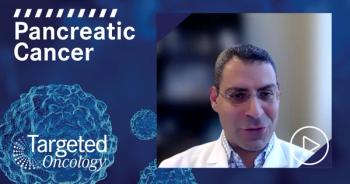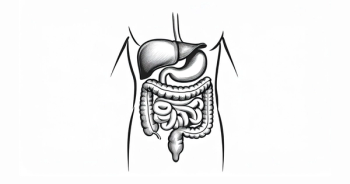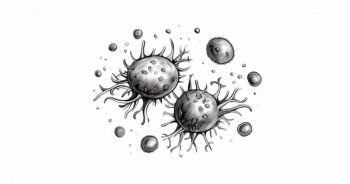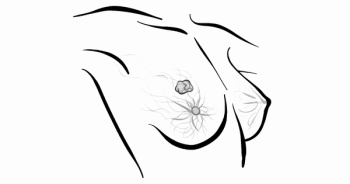
Phase 1 Trial to Study Radiation and Papaverine in Rectal Cancer

Terence M. Williams, MD, PhD, discussed the phase 1 DINOMITE trial of radiation therapy and papaverine in rectal cancer at City of Hope.
A new phase 1 clinical trial titled DINOMITE (NCT06834126) is exploring an innovative approach to improving radiation therapy for rectal cancer by enhancing tumor oxygenation. The trial builds on growing interest in nonoperative management strategies for patients with locally advanced, microsatellite-stable rectal cancer, particularly those hoping to avoid permanent colostomy and surgery.
The goal is to improve the efficacy of radiation therapy using a drug called papaverine, which has been shown to increase oxygen content within tumor cells by inhibiting mitochondrial function. Elevated tumor oxygenation may amplify the DNA damage caused by radiation, leading to better tumor control.2
The trial includes 2 cohorts: a standard-of-care group receiving radiation alone and an experimental group receiving radiation plus papaverine. Patients with microsatellite-stable, locally advanced rectal cancer who are eligible for radiation and interested in nonoperative management are the ideal patients for enrollment in the study.
In an interview with Targeted OncologyTM, Terence M. Williams, MD, PhD, a professor and chair in the Department of Radiation Oncology at City of Hope, discussed the phase 1 DINOMITE trial at City of Hope.
Targeted OncologyTM: What inspired this new approach to treating rectal cancer with radiation therapy, and what makes it different from traditional methods?
Williams: The research that we were doing was focused on understanding how to improve the effects of radiation on tumor cells while sparing the normal cells that surround the tumor. One of the areas we became interested in was in colorectal cancer. Rectal cancer is about one-third of colorectal cancer and is commonly treated when it is localized in the pelvis area with chemotherapy, radiation, and surgery. Sometimes surgery is required, or the type of surgery that is required is such that it leaves a patient with a permanent colostomy, which is an external bag that collects the feces, and they are forced to have that for the rest of their lives. These are particularly true for lower-lying rectal tumors.
There are more emerging data that sometimes chemotherapy and radiation alone are sufficient for patients to undergo a watchful waiting approach—what we call a nonoperative management—that allows them to avoid surgery, in many cases forever, or at least for many years. We wanted to make that approach even more effective. What we found through various screens is that one of my collaborators at my prior institution identified a drug that has been around for decades, used to treat various medical conditions, a drug called papaverine. It actually inhibited part of the mitochondria, these energy-producing units within the cells, and by doing so, it increased oxygen content within the tumor cells.
Now, why is increasing oxygen content important in tumor cells? It makes the radiation therapy more effective. It actually makes chemotherapy more effective too, but in this particular trial, we are focused on how to make the radiation therapy work better. The issue with oxygen is you need oxygen to make radiation work more effectively, because when the damage from the radiation hits the tumor cells, the extent of the damage is more pronounced and less able to be repaired when there is more oxygen present within the tumors themselves. We believe that this strategy is a new way to effectively improve radiation effects on tumors more so than normal tissues, because normal tissues are well oxygenated already, but tumors have areas of hypoxia, which is low oxygen content. So, this drug is designed to elevate the oxygen levels within tumors.
How does this trial build on previous research, and what makes it the right time now to test this in patients?
The trial builds on prior experience, because a long time ago, we were doing radiation after surgery. Then there was a pivotal trial that moved radiation and chemotherapy upfront before surgery for locally advanced disease. There were a number of studies, but in particular, the German Rectal Cancer Study led us to deliver therapy upfront. Over the last decade, we have actually moved all the therapy upfront before surgery in a treatment strategy we call total neoadjuvant therapy. So now we do the radiation and all the chemotherapy upfront, and there is now no chemotherapy, or very rarely, delivered after surgery. This clinical trial builds upon that by now adding an additional drug to make the radiation work more effectively.
Who is the ideal patient for this trial, and how are you deciding who might benefit the most from this approach?
The ideal patient is somebody who has what we call microsatellite-stable rectal cancer, meaning they do not have mismatch repair-deficient rectal cancer, because there are other strategies for treating those patients, particularly immunotherapy, that has been proven recently, in the past few years, to be very effective. It is the microsatellite-stable population of rectal cancer. That is on the order of about 85% of patients, the vast majority. The patients should have what we call locally advanced rectal cancer, where they would need to have radiation as part of their treatment. And those who are also pursuing what I mentioned before, nonoperative management, patients who want to pursue an approach where they do not necessarily have to go to surgery. They want to wait and see if the cancer comes back, and if it does, then they would go to surgery. But if it does not, then they would never potentially need to have surgery.
What does success look like for this phase 1 trial, and what outcomes are you hoping to see?
This phase 1 trial is focused on 2 things and has 2 different goals. One is the standard-of-care cohort: we give the radiation and chemotherapy, but we do not give that investigational agent that I mentioned—papaverine. The second cohort is the experimental group, where we add papaverine to the radiation, and then follow that with chemotherapy, with the goal to compare those 2 cohorts.
We are doing extensive blood sampling, stool sampling, and biopsy sampling several times throughout the course of that treatment so we can understand how the tumor is reacting to the radiation, not just in the standard-of-care cohort, but also how it reacts to the presence of the investigational drug. Specifically, we are looking at hypoxia indicators within the tumor and in the adjacent normal tissue of the rectum. We are looking at microbiome species, the gut bacteria, and how that changes with radiation and the drug. And we are looking at immune cell traffic and immunophenotyping of both the tumor microenvironment as well as the blood.
Overall, the study consists of the 2 cohorts and a total of 36 patients. If the results are promising, we will attempt to move it on into a phase 2 trial to further assess the efficacy of the combination of radiation with the investigational drug papaverine. In addition to performing the biopsies during the course of the treatment to do dense molecular characterization, we will also be performing functional MRI scans to measure baseline oxygen content within the tumors and see how it changes with the drug treatment.









































